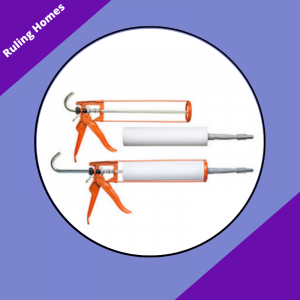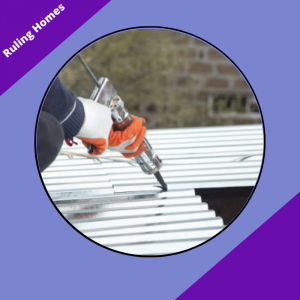A metal sealant protects high-quality metal from corrosion, UV radiation, scratches, and heat damage. It is also used to make metal moisture-repellent.
The common material used in metal sealant is silicon. It also comes in butyl and polyurethane, which directly configures the price and longevity of the metal sealant.
Water-based latex also serves the same properties, depending on the type and surface of the metal. It commonly enhances the metal’s durability. It is efficient in sealing the open ends of the metal.
Silicone-based metal sealant is the most commonly used mixture as it lasts longer than any other type due to its strong, cohesive properties. It seals the open holes and spaces with such an adhesive force that it won’t be detached once applied.
Silicon-based metal sealant doesn’t get damaged or removed easily.
The history of metal sealant is not too old. Sealant was already present in the market in the mid-1960s. But the metal industry also faced the problem of corrosion and temperature changes.
They observed that the metal could catch rust more often when it directly came in contact with water and moisture. It was due to the space and holes left in the windows and doors. The polymer-based solution was used initially to fight corrosion. But silicon-based metal sealant proved to be the best cure for this problem.
Table of Contents
What Is The Ideal Material For Metal Sealant?
The ideal metal sealant is a silicon-based sealant. Its long-lasting, and durable properties make it the best.
The silicone and butyl metal sealant costs more than any other type. The cheapest type of metal sealant comes in water-based latex that lacks long-term and reliable properties.
The frequency of usage determines how long will your metal sealant remain intact. The metal type configures the adhesive function, and a good metal will strongly absorb the sealant and protect it from significant damage from moisture.
People concerned about environmental health might want to consider eco-friendly metal sealants. Some of the sealants release harmful fumes that are crucial to the skin and eyes. Always Consider The Quality Of The Sealant To Be Less Toxic.
What Are The Different Types Of Metal Sealants?
Butyl: Butyl rubber is elastomeric, primarily used to seal open ends and coverings. It consists of isobutylene and co-isomeric that are efficient in refraining moisture and water accumulation in the spaces.
Silicon: Silicon is widely used to seal window frames and doors. They effectively provide water-resistant properties and hold a solid bond to fight harsh weather conditions and other harmful rays.
Polyurethane: It is the most versatile sealant used for sealing open end and closed spaces. It also serves the properties of repelling moisture and water splashes. Harmful UV rays strive to enter closed spaces, but polyurethane is a master in handling the UV rays.
What Is The Ideal Size For A Metal Sealant?
The ideal size of the metal sealant depends on the surface on which you want to apply the sealant. It works differently for residential and commercial purposes. More window frames and doors require more metal sealants to seal the open ends properly.
What size metal sealant do I need? It depends on how many windows and doors you want to apply the metal sealant. First, you need to check the size of the windows and doors. Multiply the total length by the product of width and depth.
Usually, a 300ml metal sealant is enough for two large-size window frames. For commercial usage, calculate the total size of the windows and doors. Commercially, you will require the sealant in gallons.
You might also want to consider the adhesive properties of the metal sealant. The most adhesive metal sealant will serve for longer durations and can handle moisture. It will save the metal frames from heat factor and small insects that always try to get into the closed spaces.
What Are The Use Cases Of Metal Sealants?
Some of the use cases of metal sealants are:
- Maintain the originality of the windows
- Refrain moisture
- Repels water accumulation
- Insects are not able to get in as far as metal sealant is applied
- Resist corrosion
Once you have purchased the metal sealant, you will know the benefits of this product.
Does UV Pass Through Metal Sealant?
No, UV won’t pass the metal sealant as it forms the hard filling inside the frames and gaps.
How Do You Glue The Metal Sealant?
We have found that silicon effectively binds with metal because of its rubber. Just apply the hot and soft silicon in the gaps of the frame.
When To Apply The Metal Sealant?
After installing new windows and doors, you are advised to apply the metal sealant immediately to protect the frames from damage.
How Is Metal Sealant Effective In Fighting Insects?
When you apply the metal sealant to the open gaps and spaces between the doors and frames, insects won’t be able to enter those areas due to the hard sealant.
What Are The Best Metal Sealant Brands?
The best metal sealant brands so far are:
Best overall metal sealant: Loctite
Best cost-friendly metal sealant: Dow Corning
Best eco-friendly metal sealant: Surebond
Best value metal sealant: GE
What Is The Life Span Of The Metal Sealant?
The typical metal sealant will last for about 10-15 years. It depends on the metal quality and the type of sealant. The average life span of the metal sealant can be increased by keeping up maintenance.
Some other factors on which the lifespan of the metal sealant depends:
- Initial purchase
- High-quality material
- Moisture ratio
- Metal surface
A good quality metal sealant costs anywhere from $10-$80 for 10 ounces bottle that does not include installation. More windows will require more quantity of metal sealant.
How Does The Culture Affect The Usage Of Metal Sealant?
Metal sealant is an advanced invention, and people started using the sealant as soon as it began to reach the big market. Metal sealant proved to be a standard product in the open atmosphere where people install more windows. Metal sealant is a viable product for the gaps in window frames.
Many countries are using metal sealants for many different purposes. It is also used to protect the metal from stains and moisture accumulation, especially in humid areas.
What Are The Relevant Tools For A Metal Sealant?
Water-based sealant: Water base sealant works similarly to the metal sealant. Both are used to seal the open ends and pores. The water-based solvent contains mostly water as the main ingredient ital for dry surfaces.
Rubber metal sealant: Rubber is the old method of sealing closed ends. In this method, a long and soft rubber is fixed in the gaps, but it will tear off after some days due to the non-stickiness of organic rubber.
Solvent-based sealant: It also works like the metal sealant. It is suitable for handling stains and other chemical reactions but cannot hold moisture for long.
What Are The Features Of Superior Metal Sealants?
Here are some of the best features of superior metal sealants.
Soft material: Soft metal sealant can get into little spaces with ease.
Sticky: Stickiness in metal sealant is suitable for holding the pores for long age.
Penetrating: High-end metal sealant will penetrate deeper into the open pores and gaps to repel moisture and chemical reactions.
What Constitutes Metal Sealant?
Here are the constituents of metal sealant.
Solvent mixture: A soft and rubbery solvent is applied to different areas.
Plastic bottle: Plastic bottle hold the solvent away from reactions.
Pigments: Pigments are used to form different colors.
Adhesion promoters: These are the little additional particles that help the sealant stick to the metal surface tightly.
Resin: It is used to make the surface hard after quick drying.
How Did Metal Sealant Get Its Name?
It is not known how the metal sealant got its name. People started facing the issue of moisture, water accumulation, stains, and strong chemical reactions inside the gaps in metal frames, windows, and doors. A solution was named metal sealant after facing these problems.
It proved to be the best partner of metal that repelled moisture and stains for longer durations. People call the sealant by different names in different regions of the world. It is also called a sealant, metal gaps locker, and rubber-metal sealant.
What Is The History Of Metal Sealant?
The history of metal sealant is not too old. It took off to every house in the mid-1960s, right after its invention. Metal sealants followed the invention of sealants used for wood, plastic, and floors.
People also started facing the same issue with metal, so metal sealant proved to be the best partner for closing all open ends and gaps.
Metal comes in contact with the sun most often, and with time it starts absorbing the harmful rays and drops its hard and stiff quality. Sealants for metal played a vital role in this regard, permanently blocking the entrance of moisture, stains, and UV rays. Today we see the most updated form of metal sealants outperforming their function.

I grew up on a small farm in New Jersey. We had a big family because my parents, my uncles and aunties all were living together on this farm so, you can imagine, it was always over crowded with people. But living in farm was really great because we had to do everything on our own and I learned so many things from my parents and uncles and aunties and that is where I found my passion for fixing things, whether it is renovating or designing, I was always there. Read more


